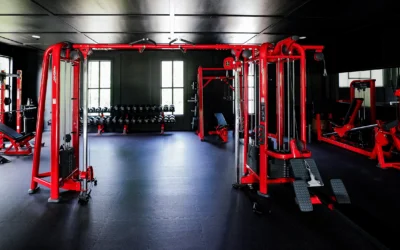Exploring Sustainable Fashion: How to Build an Eco-Friendly Wardrobe on a Budget

In recent years, the fashion industry has come under increasing scrutiny for its environmental and social impact. The rise of fast fashion, characterized by rapid production cycles and cheaply made clothing, has led to significant pollution, exploitation of labor, and waste. As awareness of these issues grows, many consumers are seeking alternatives that align with their values. Enter sustainable fashion—a movement that aims to minimize harm to the planet and people while still allowing individuals to express themselves through clothing. In this article, we’ll explore the concept of sustainable fashion and provide practical tips on how to build an eco-friendly wardrobe on a budget.
Understanding Sustainable Fashion
Sustainable fashion encompasses a wide range of practices aimed at reducing the industry’s negative impact. This includes using environmentally friendly materials, adopting ethical labor practices, minimizing waste, and promoting transparency throughout the supply chain. Unlike fast fashion, which prioritizes speed and low cost above all else, sustainable fashion takes a more holistic approach, considering the long-term consequences of production and consumption.
The Impact of Fast Fashion
Before delving into sustainable fashion, it’s essential to understand why the current fashion model is unsustainable. Fast fashion brands churn out new styles at breakneck speed, encouraging consumers to buy more clothing than they need. This leads to overproduction, excessive use of natural resources, and a staggering amount of textile waste. Moreover, many fast fashion garments are produced in sweatshops where workers are paid poverty wages and subjected to unsafe working conditions.
Identifying Sustainable Fashion Brands
Fortunately, there is a growing number of fashion brands committed to sustainability. When shopping for eco-friendly clothing, look for brands that prioritize organic and recycled materials, ethical production practices, and fair wages for workers. Certifications such as Fair Trade, GOTS (Global Organic Textile Standard), and B Corp can also help you identify trustworthy brands. Additionally, many sustainable fashion brands are transparent about their supply chain, allowing consumers to trace the journey of their clothing from raw materials to finished product.
Building a Sustainable Wardrobe on a Budget
Contrary to popular belief, sustainable fashion doesn’t have to break the bank. There are plenty of budget-friendly ways to build an eco-friendly wardrobe:
- Thrifting: Second-hand shopping is one of the most sustainable ways to update your wardrobe. Thrift stores, consignment shops, and online resale platforms offer a treasure trove of pre-loved clothing at affordable prices. Not only does thrifting reduce waste, but it also allows you to discover unique pieces that you won’t find in mainstream stores.
- Clothing Swaps: Organize a clothing swap with friends or family members to exchange items you no longer wear. It’s a fun and eco-friendly way to refresh your wardrobe without spending a dime. Plus, you’ll get the satisfaction of knowing that your unwanted clothing is finding a new home instead of ending up in a landfill.
- DIY Fashion: Get creative and upcycle old clothing into new styles. Whether it’s turning an oversized shirt into a crop top or adding patches to a pair of jeans, DIY fashion allows you to personalize your wardrobe while reducing waste. There are plenty of online tutorials and inspiration to help you get started.
- Capsule Wardrobe: Consider adopting a capsule wardrobe approach, where you curate a small collection of versatile pieces that can be mixed and matched to create multiple outfits. By investing in high-quality, timeless staples, you’ll reduce the need for constant shopping and minimize waste.
Styling Sustainable Fashion
One of the misconceptions about sustainable fashion is that it’s limited in style options. In reality, eco-friendly clothing comes in a wide range of styles, from casual basics to high-fashion designs. The key is to invest in pieces that align with your personal style and can be worn in multiple ways. Mix and match sustainable basics with statement pieces to create unique outfits that reflect your individuality.
Conclusion
As consumers become more conscious of the environmental and social impact of their purchases, the demand for sustainable fashion continues to grow. By making informed choices and supporting brands that prioritize sustainability, we can collectively work towards a more ethical and environmentally friendly fashion industry. Building an eco-friendly wardrobe doesn’t have to be expensive or daunting—by thrifting, swapping, DIYing, and investing in timeless pieces, you can create a wardrobe that looks good, feels good, and does good for the planet. Let’s embrace sustainable fashion as a step towards a more sustainable future.



